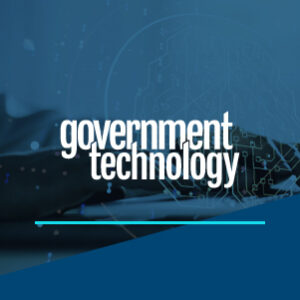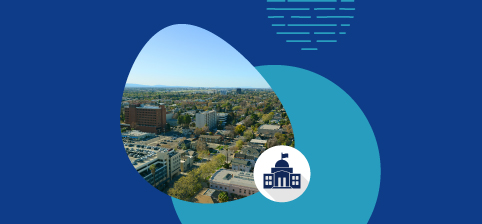State and local governments are dramatically expanding their deployment of artificial intelligence (AI) and machine learning (ML), moving the use of these technologies from theoretical to practical. More governments are using AI in the form of machine learning to scour system activity logs to detect suspicious behavior that may signal a cyberattack. Intelligent software can automate this task and perform it at a scale that’s difficult for humans to match. But although states and localities are moving rapidly to take advantage of AI and ML, the first wave of deployments often focused on individual programs or tasks: chatbots, for example, that answer questions about unemployment insurance claims or help utility customers restore service. Broader and deeper use of AI will require governments to rethink traditional data management policies and upskill IT teams. Read the latest insights from industry thought leaders in artificial intelligence and machine learning in Carahsoft’s Innovation in Government® report.
From Call Center to ‘Experience’ Center
“Agent assistance is a great example of how AI can improve both the agent experience and the customer experience. An agent assistance solution detects keywords within a spoken or written dialogue, and then uses those keywords to automatically present helpful information to the agent. In the case of new hires or agents who lack subject expertise, this type of solution not only saves time. It provides “training wheels” for the agent until they’re up to speed. AI models like agent assistance can also learn from agent feedback. Agents basically agree or disagree with the information that the AI presents, which helps the AI solution continually refine what it provides based on the context.”
Read more insights from Genesys’s Principal Solution Consultant, Nathan Hamrick.
Why Wait? Simple Strategies Put AI and ML Within Reach
“You don’t have to be a data scientist or develop custom models to be effective. There are very good AI solutions that are purpose built for specific use cases and don’t require customization, such as our Vision AI. I would start there. A software engineer can do what’s needed, and the solution will likely address a lot of the organization’s needs. Over time, software engineers and others can expand their skillset to retrain custom models in lightweight ways for slightly different use cases the generalized AI doesn’t accommodate. For example, Google Cloud’s Auto-ML products can be used by non-data scientists to retrain our best-in-class AI models for more custom use cases. Just remember that the AI solution is only one part of a larger automated processing use case, and organizations need to plan for how AI is going to be incorporated into that bigger process, so it can be used efficiently.”
Read more insights from Google Cloud Public Sector’s Strategic Business Executive, Chris Haas.
Reducing Complexity and Preparing for Success
 “Zero trust security is becoming a common expectation for managing access. The basic concept is that the network should not assume any user is trustworthy — regardless of whether they’re outside the network or already in. Organizations using a zero trust approach implement access controls inside and outside the network. Another important tactic is to minimize the number of handoffs. In other words, simplify the network architecture. Nodes — and connections between those nodes — create complexity, and complexity leads to management challenges and greater risk.”
“Zero trust security is becoming a common expectation for managing access. The basic concept is that the network should not assume any user is trustworthy — regardless of whether they’re outside the network or already in. Organizations using a zero trust approach implement access controls inside and outside the network. Another important tactic is to minimize the number of handoffs. In other words, simplify the network architecture. Nodes — and connections between those nodes — create complexity, and complexity leads to management challenges and greater risk.”
Read more insights from Cloudera’s Senior Manager of Professional Services Strategy, Timur Nersesov.
Building a Human-Centered Foundation for Advanced Analytics
“Organizations often struggle to advance because of legacy processes. It’s important to be open to new thinking and new methodologies to accelerate the maturation process. Many organizations also lack a solid grasp of their strengths and weaknesses regarding analytics. In addition, their processes may be hostage to legacy systems, data silos or poor alignment across enterprise teams. To address these issues, organizations often need to work first on breaking down traditional barriers between data scientists, IT, citizen data scientists, analysts and domain experts. One way to support this is via a unified, human-centered analytics platform. Such a platform augments human capability regardless of one’s technical acumen, which allows everyone to take advantage of geospatial, predictive and ML-based analytic capabilities to collaborate, innovate and solve problems.”
Read more insights from Alteryx’s Vice President of Sales for State and Local Government and Education, Chuck Ellstrom.
Getting the Most from a Next-Generation Contact Center Platform
“AI enables better automation that empowers both end customers and agents through high-quality self-service and agent assistance. Numerous studies have shown that citizens and customers alike prefer self-service channels. Intelligent automation can make those channels much more effective with AI-powered virtual assistants and agents — not just for informational requests, but also for more complex transactions like understanding eligibility or checking claim status. In addition, intelligent automation can help increase agent productivity through things like agent assistance and help new agents become effective faster, which ultimately results in a better citizen experience.”
Read more insights from Talkdesk’s Vice President of Industry and Strategy for Public Sector, John Bastin.
Reimagining Talent Management
“A single platform is uniquely able to provide deep insights at scale. When you can use AI on one side to rationalize job requirements and on the other side to create a capabilities matrix of individual job seekers, you create some very powerful outcomes. So, a talent intelligence platform really becomes foundational to enabling a number of use cases such as dramatically reducing the time to re-employment, minimizing underemployment and reimagining learning and apprenticeship opportunities. And because AI is self-learning, a talent intelligence platform means these outcomes continually improve over time.”
Read more insights from Eightfold AI’s Vice President of Applied AI & Public Sector, Dan Hopkins.
Download the full Innovation in Government® report for more insights from these AI/ML thought leaders and additional industry research from GovTech.






